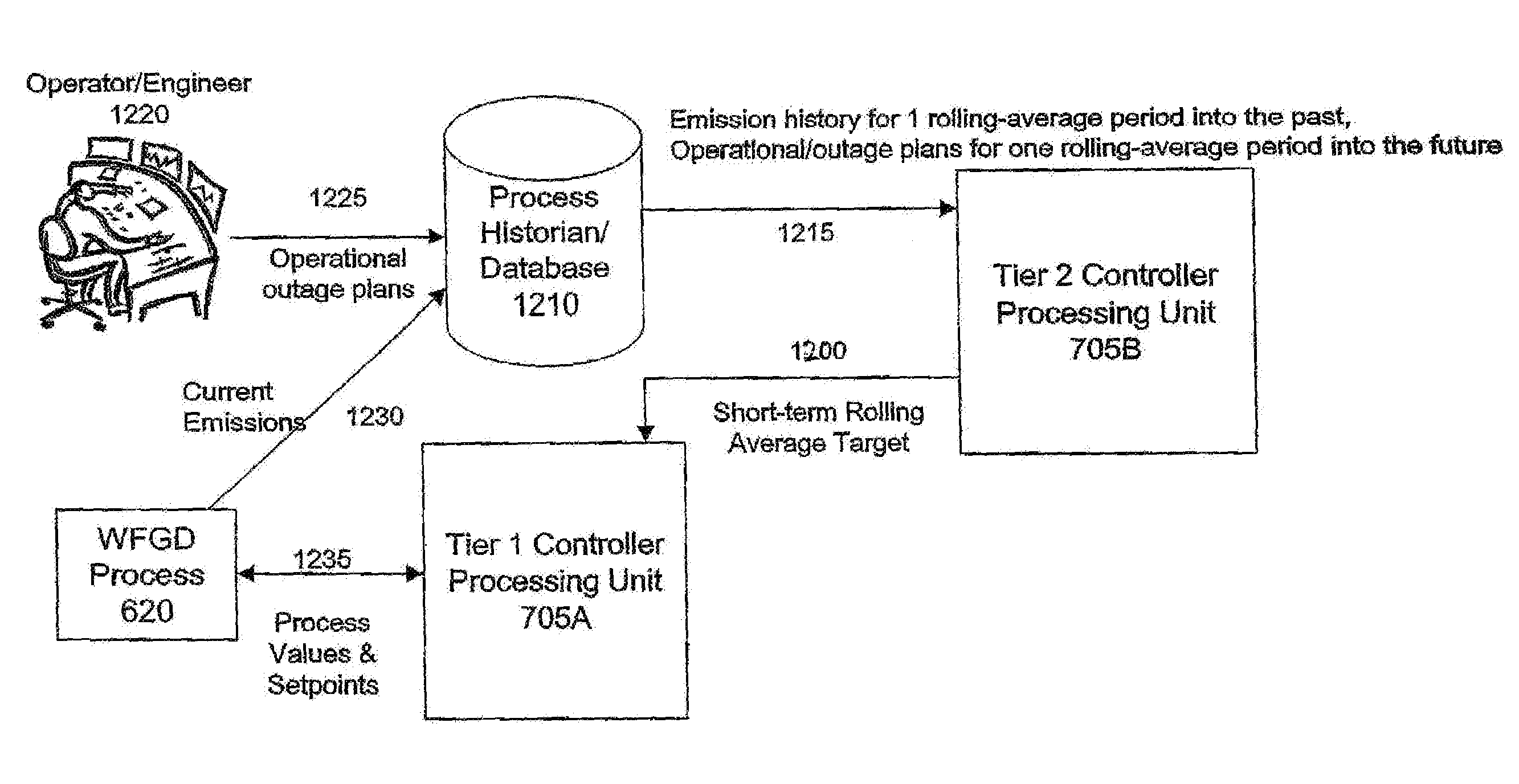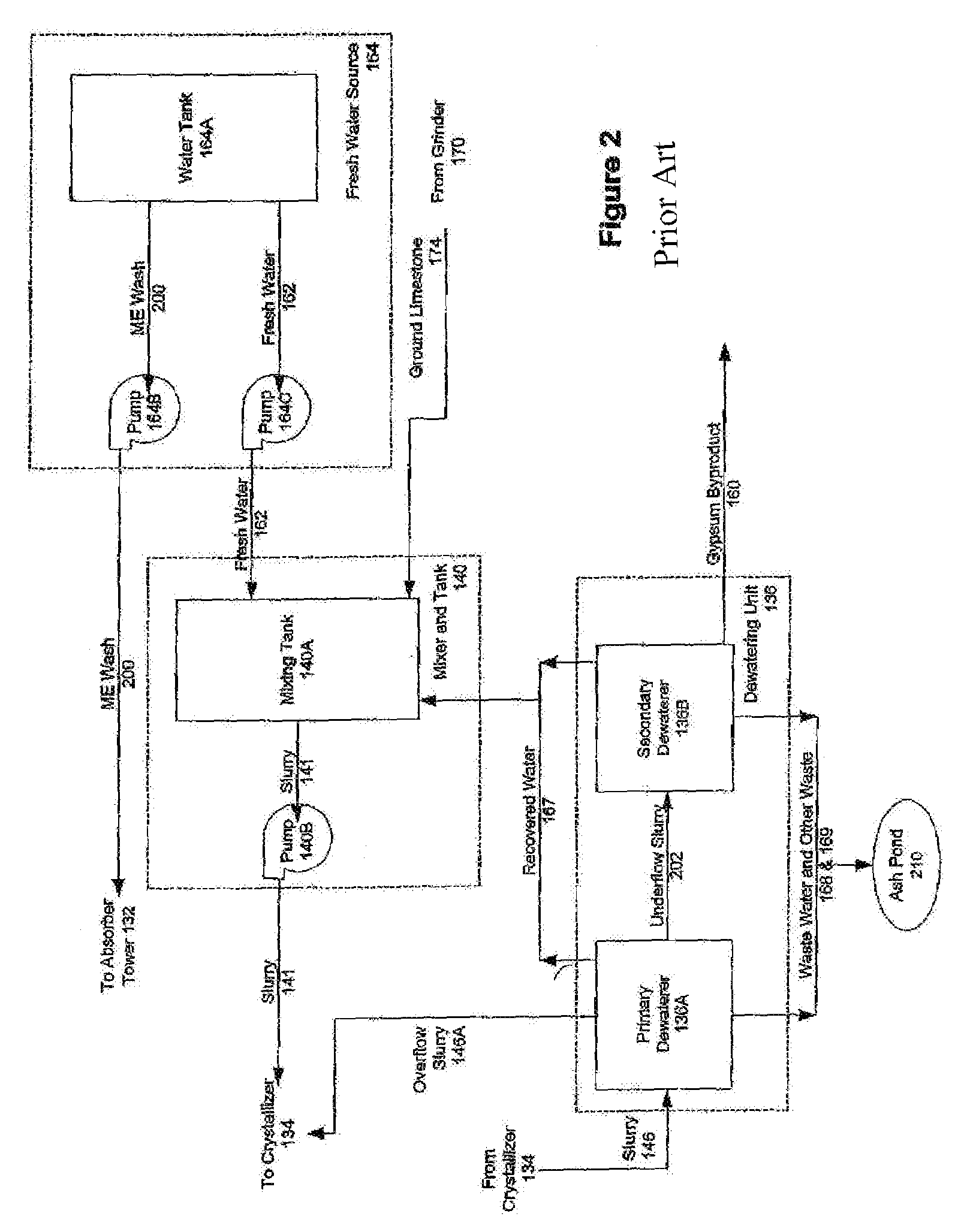Maximizing regulatory credits in controlling air pollution
a technology of air pollution and regulatory credits, applied in the field of process control, can solve the problems of at least one of the other predefined operating limits, and achieve the effects of minimizing catalyst volume, minimizing catalyst volume, and maximizing space velocity
- Summary
- Abstract
- Description
- Claims
- Application Information
AI Technical Summary
Benefits of technology
Problems solved by technology
Method used
Image
Examples
Embodiment Construction
[0149]As demonstrated, efficient and effective operation of WFGD and similar subsystems is now more complex than ever before. Furthermore, it is likely that this complexity will continue to increase in coming years with additional competitive pressures and additional pollutant regulation. Conventional process control strategies and techniques are incapable of dealing with these complexities and hence are incapable of optimal control of such operations.
[0150]In a business environment that is dynamically changing over the course of a subsystem's useful operating life, it is desirable to maximize the commercial value of the subsystem operations at any given time. This asset optimization may be based on factors that are not even considered in the conventional process control strategy. For example, in a business environment in which a market exists for trading regulatory credits, efficient subsystem operation may dictate that additional regulatory credits can be created and sold to maxim...
PUM
| Property | Measurement | Unit |
|---|---|---|
| pH | aaaaa | aaaaa |
| temperatures | aaaaa | aaaaa |
| current | aaaaa | aaaaa |
Abstract
Description
Claims
Application Information
 Login to View More
Login to View More - R&D
- Intellectual Property
- Life Sciences
- Materials
- Tech Scout
- Unparalleled Data Quality
- Higher Quality Content
- 60% Fewer Hallucinations
Browse by: Latest US Patents, China's latest patents, Technical Efficacy Thesaurus, Application Domain, Technology Topic, Popular Technical Reports.
© 2025 PatSnap. All rights reserved.Legal|Privacy policy|Modern Slavery Act Transparency Statement|Sitemap|About US| Contact US: help@patsnap.com



